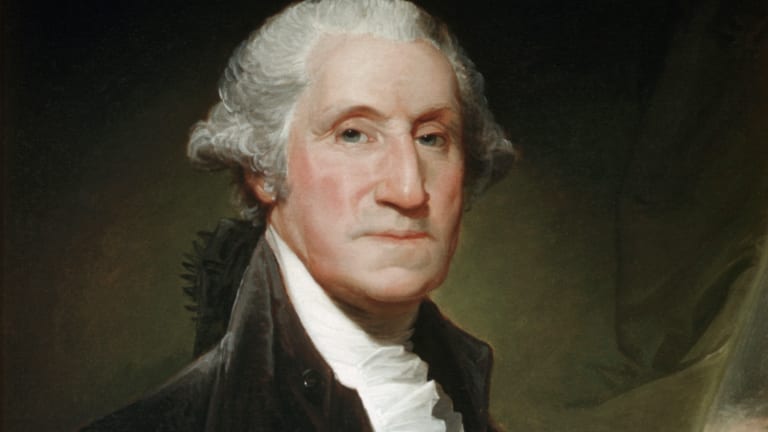Punk rock has always been a culture defined by rebellion, anarchy, and defiance. At worst, it can be described as chaotic and messy. At best, it can be described as individualistic and anti-authoritarian.
GG Allin, an infamous punk rocker, spent his career leaning more toward the chaotic and messy interpretation. He pushed the boundaries of social norms. His acts were full of deviant behavior.
So much so, that by the end of his career, people were seeking the experience of his concert for his antics rather than his music. And although he passed away at 36 years old, his behaviors left an undeniable mark on the punk rock scene.
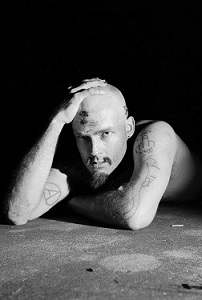
The Early Days: A Troubled Youth
GG Allin’s tumultuous life began in a much calmer environment. He grew up in Groveton, New Hampshire, a town of just over 1000 people, in a wooden cabin with no running water or electricity.
His father, Merle Allin Sr., was a religious fanatic who believed that he had been visited by God. He was told that his son would be a great figure, so he named his son Jesus Christ Allin.
Allin’s younger brother, Merle Jr., struggled to say this name and started to call him “JeJe” instead, which Allin adopted as his name for the rest of his life.
Merle Sr.’s insanity and fanaticism led him to constantly abuse and threaten his family. This resulted in a childhood that Allin would later describe as primitive and closer to being a prisoner than a child.
Merle Sr. dug graves in the basement to reinforce his constant threats to kill his family. He limited contact with the outside world.
After a failed attempt to escape that was thwarted by Merle Sr. kidnapping Allin, Allin’s mother successfully fled with the boys in 1961. She filed a divorce to escape the worsening mental state of Merle Sr.
Becoming a Troubled Child
After moving to Vermont in 1966, it became clear Allin was a troubled child. He required special education in school and would act out constantly.
He and his friends would do drugs, break into homes, and cross-dress in school to emulate their favorite punk bands.
Allin stood out from other kids, which made him the target of bullying. However, he lived his own life and was fine with being an outsider.
He would maintain this trajectory throughout his life, being interested in criminality, the macabre, and anything outside the social norm. As he grew older he would write letters and visit noted serial killer John Wayne Gacy, and even commission his art for an album cover.
The Underground Scene: The Jabbers and Beyond
Allin’s early exposure to rock ‘n’ roll also helped ignite the rebellious spark within him. By the age of 12, he had formed his first band with kids from school.
It was not until the late 1970s though that it became a career, when Allin became the frontman of The Jabbers. For seven years the band would produce music and perform live together. They made their way through seedy dive bars and earned a reputation in the punk scene.
Soon though, the other members of the band began finding Allin intolerable because he was unable to compromise with them. They disbanded in 1984.
For the remainder of the 1980s, Allin would rotate through bands for as long as they would tolerate him, including bands like the Scumfucs, the Texas Nazis, and the Cedar St. Sluts.
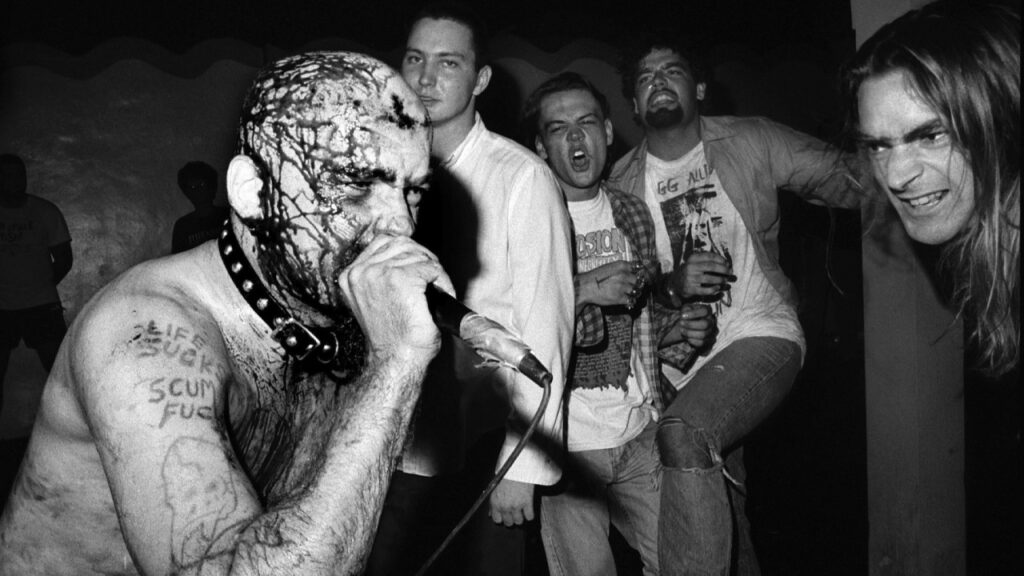
GG Allin Unleashed: Anarchy, Nudity, and Violence
GG Allin’s performances became increasingly frenzied during this time, highlighting his punk rock attitude. His shows were characterized by nudity, self-mutilation, and confrontations with the audience.
Bloody Mess, one of his fellow performers, recalls the first time that GG Allin defecated on stage. He claimed that Allin took laxatives earlier in the day and was holding it in for hours.
After the band got on stage he let it go and the crowd exploded because of the smell, cheering while running for the doors. Allin loved the result and made it a regular feature of his performances.
He incorporated not only feces, but also blood into his shows. He would cover himself in both and fling it out into the audience.
Soon after, he also began injuring members of the crowd, which resulted in incarceration in 1989 for sexual assault and intense violence short of murder. His uncouth acts also got his bands banned from many venues across the Northeast, hindering his bands’ growth.
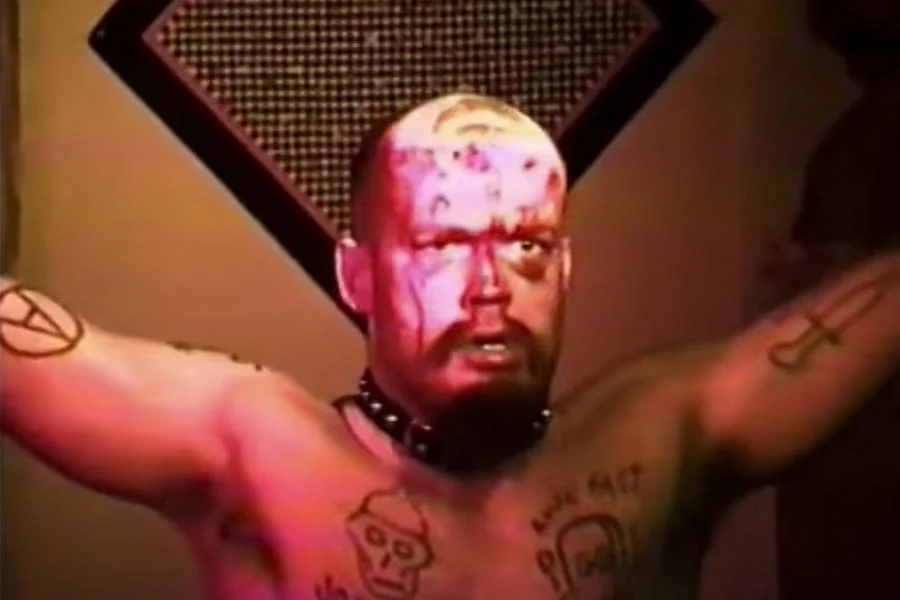
The Ill-Fated Final Show
GG Allin’s tumultuous journey came to a tragic end on June 28, 1993. His final show at The Gas Station in New York City, billed as “The Last GG Allin Show,” would be remembered not for the music but for the chaotic events that unfolded that night.
Dedicated to the shock value of his life performances, GG promised to commit suicide on stage, which attracted a huge crowd. Rather than killing himself on stage though, Allin began a riot before slipping away.
He was later found in his Manhattan apartment, dead as the result of a heroin overdose. So while Allin had not ended his life on stage, it was perhaps a fulfillment of his promise to his fans that he overdosed.
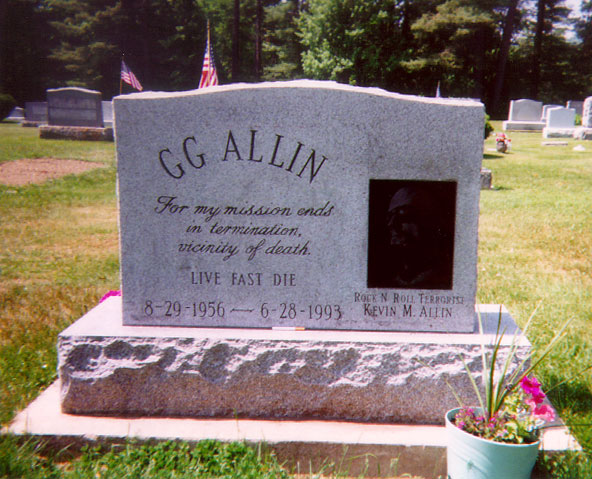
Legacy and Controversy
GG Allin’s legacy remains a subject of intense debate within the punk rock community and beyond. Some view him as a symbol of uncompromising rebellion, an artist who fearlessly challenged societal norms and pushed the boundaries of artistic expression.
Others see him as a destructive force, whose actions perpetuated a negative stereotype of punk rock and crossed social boundaries that should not have been crossed. Regardless, it is impossible to deny that Allin stands as a symbol of punk, for better or worse.
References
Dome, Michael. “16 things you might not know about about GG Allin.” Louder, November 7, 2022. https://www.loudersound.com/features/blood-and-guts-16-facts-about-gg-allin.
McNeil, Legs. “GG Allin’s Last Day on Earth.” Vice, December 31, 2013. https://www.vice.com/en/article/6w7bq6/gg-allins-last-day-on-earth.

